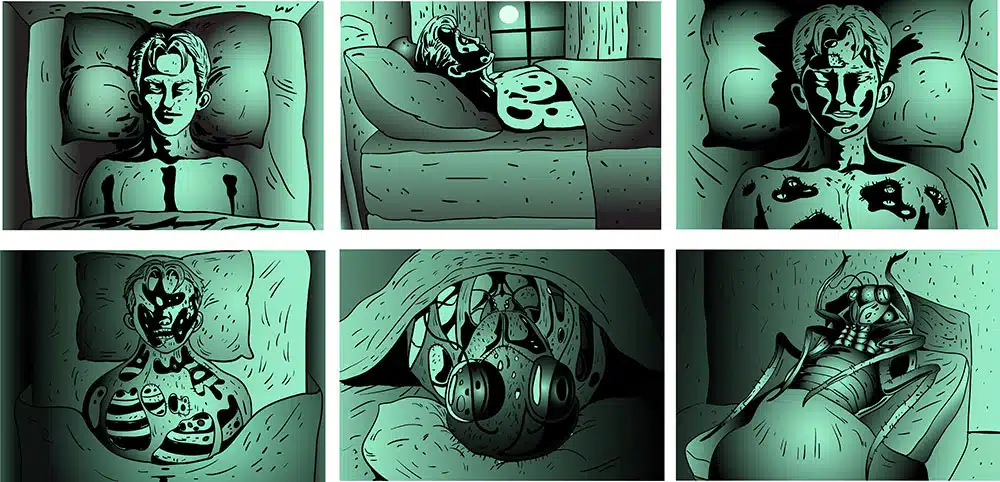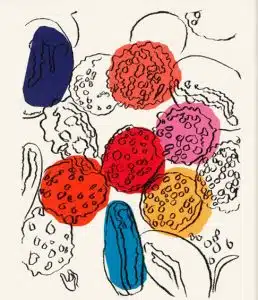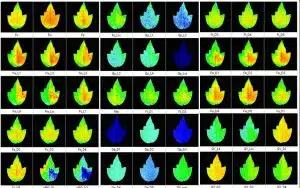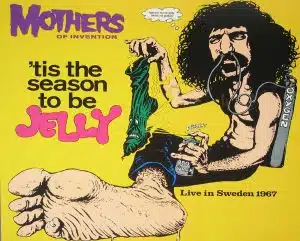
OK, I know that Kafka’s The Metamorphosis is all about existential angst, loneliness and isolation, but as a physiologist my main interest when reading it was how, and at which point, Gregor’s respiratory system switched from continuous breathing into the lungs to discontinuous breathing through spiracles. After all, cockroaches can close off their spiracles for several minutes to conserve water, as you would know if you had studied them using one of Qubit’s Insect Respirometry Systems. Gregor would have been a tad on the large side for our insect chambers, so my approach to checking out his respiratory physiology would have been to stick him in one of our newly developed large metabolic chambers to measure his O2 and CO2 exchange rates using Qubit’s Instrumentation for Metabolic Testing. Breath by breath analysis using our VOCO CPX System would also be an approach, but it might mean ruining a perfectly good Hans Rudolf face-mask when his mandibles emerged. If this sounds a bit Kafkaesque—well, we all face our Trials, don’t we?
But what links Kafka with Lennon, Warhol and Zappa? To find out, read on…
Dr. Stephen Hunt. President and CEO, Qubit Systems Inc.
I Am The Walrus

Have you ever wondered what John Lennon’s lyrics to I am the Walrus mean? Yeah, me too. Despite spending my Liverpool University years living on Penny Lane, and speaking with the same laconic drawl as the Fab Four, Lennon’s lyrics (unlike those of Sir Paul) continue to confuse. I suppose it’s what comes of not using the same substances. Still, when Lennon muses about an Elementary Penguin singing Hare Krishna, I have to wonder about the energy expenditure involved, given the seemingly obscure evolutionary advantage of such behavior. Curiosity of this nature led to the development of Qubit’s respirometry systems for Aquatic Organisms, and although these have yet to be used to study walruses, they have been used to study seals: Development enhances hypometabolism in northern elephant seal pups (Mirounga angustirostris)
Michael S. Tift, Elizabeth C. Ranalli, Dorian S. Houser, Rudy M. Ortiz, Daniel E. Crocker
https://doi.org/10.1111/1365-2435.12111
But what links Lennon with Kafka, Warhol and Zappa? Read on…
Andy Warhol Looks a Scream

Concerning the use of substances, I wonder what Andy Warhol was on when he produced the above illustration after observing cells under a microscope. Perhaps he was just looking at crud on the cover-slip? The colors are intriguing though and, if those are really are cells, their reflective indices could be indicative of their biochemical status. After all, Warhol was ahead of his time in so many ways that he may have got his hands on Qubit’s instruments for Fluorescence and Hyperspectral Analysis even before they were invented. These instruments are used not only for physiological and biochemical analyses of cells on plates and in Photobioreactors, but for leaf, whole plant and even crop studies, as in Qubit’s Plant Phenotyping instrumentation. The image data generated may not have the seductive allure of Marilyn Monroe (except, perhaps, to a plant physiologist) but there’s something distinctly Warholian (and almost sexy) about the following array of chlorophyll fluorescence kinetics parameters:

But what links Warhol with Kafka, Lennon and Zappa? Read on…
A Jellyfish, Mr. Zappa?

With all respect to current and former recipients of the MacArthur Foundation award, the designation “Genius” (especially when self-applied) rings hollow when those so honored are compared to Frank Zappa. What Darwin was to biology, Zappa was to contemporary music, both geniuses being very much in the business of evolution. As if in recognition of this, Zappa’s name has been immortalized in a bacterial gene (ZapA-Proteus mirabilis), a fish (Zappa confluentus), a jellyfish (Phialella zappai), a Spygoria fossil (Spygoria zappania), a mollusc (Amaurotoma zappa), a spider (Pachygnatha zappa), a bacterium (Propionibacterium zappae), and even a variety of hop. That diversity almost matches the diversity of Qubit equipment available for research and teaching in the biological sciences. To view the full scope of what we do and how we do it, explore this website www.qubitsystems.com.
So what is it that links Zappa, Kafka, Lennon and Warhol, and what has this got to do with Experimental Biology?
Prague

Kafka: Born in Prague July 3rd, 1883. Celebrated at the Prague Kafka Museum.Lennon:
The John Lennon Wall in Prague is a monument to peace, love, and resistance to political oppression.
Warhol: Born in Pittsburg of Czech parents, and named Andrew Warhola, Czechia regards Warhol as one of its own. See the permanent Warhol exhibition at the Prague Central Gallery.
Zappa: In January 1990, Czech President Vaclav Havel appointed Frank Zappa as Special Ambassador to the West on Trade, Culture and Tourism, much to the disgruntlement of U.S. Secretary of State, James Baker, who is famous for declaring: “You can do business with the United States or you can do business with Frank Zappa.” Vaclav Havel counted himself amongst Zappa’s biggest fans, stating “Frank Zappa was one of the gods of the Czech underground.”
... and Experimental Biology?

Visit Qubit Systems at Booth #16 at the Society for Experimental Biology Annual Meeting in Prague between Tuesday July 2nd and Friday July 5th. Stop by to check out our instrumentation, or for a chat about literature, music and art. We can talk science, too, if you feel that way inclined.
We’re offering a discount of 5% on Qubit-built equipment to delegates who mention this newsletter – and a further 5% to anyone willing to join in the closing chorus of Zappa’s Billy the Mountain.
Where else we're Exhibiting in 2024
The American Society of Plant Biology. Honolulu Hawaii June 22nd – 26th
American Agronomy Society. San Antonio,Texas November 10th- 13th
American Geophysical Union. Washington DC, December 9th-13th

